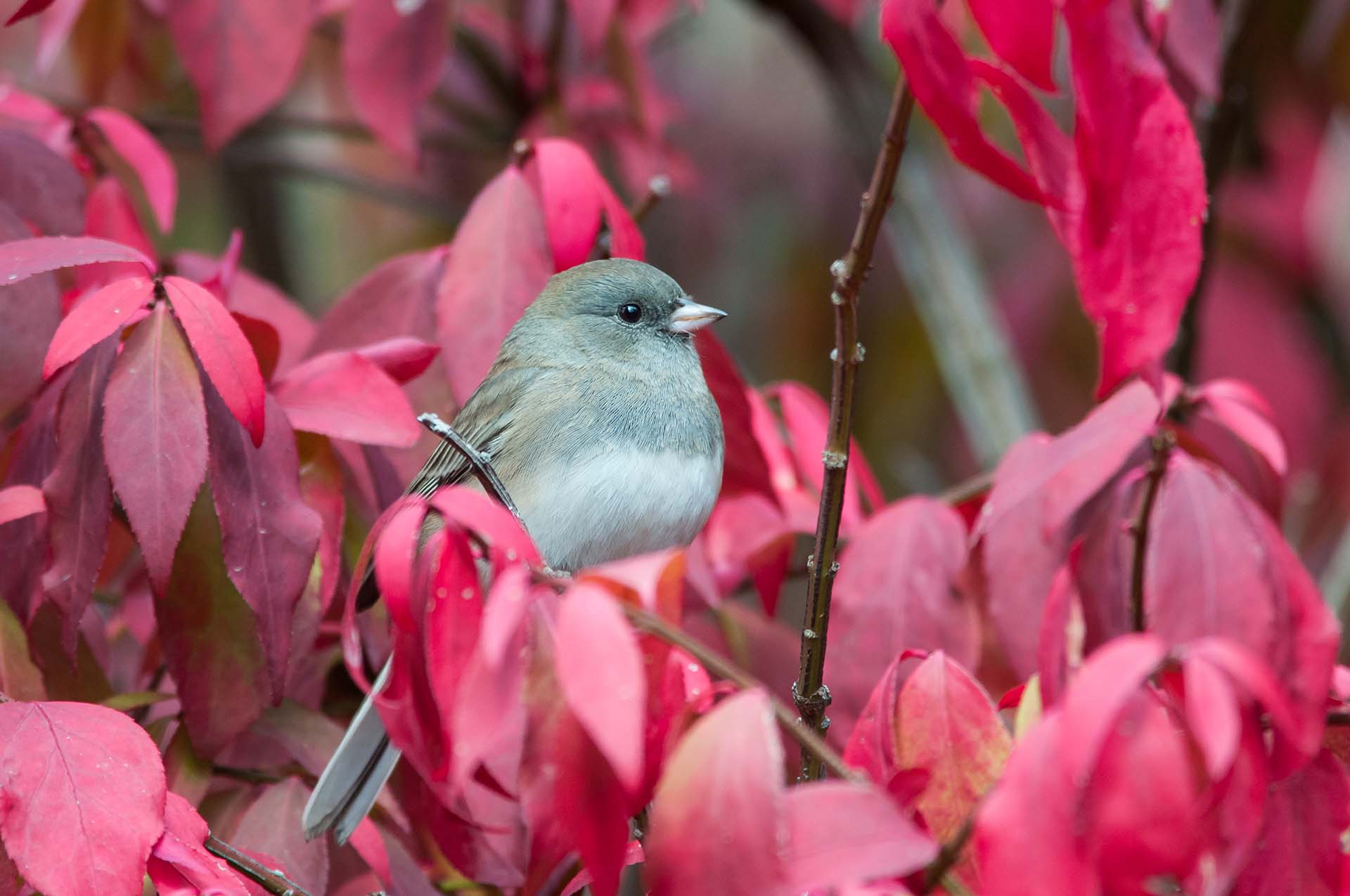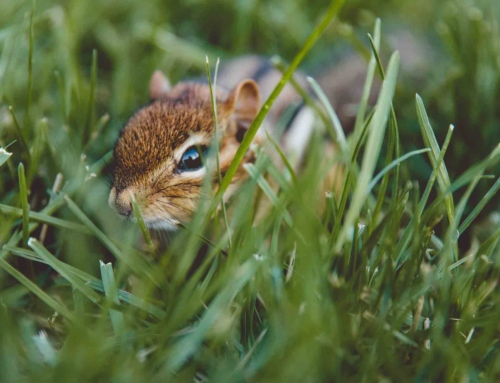How (and Why) to Clean Your Winter Bird Feeder
Disclosure: This post may contain affiliate links
Dirty bird feeders are a breeding ground for disease that could decimate entire backyard bird populations. Here's how to keep those feeders clean.
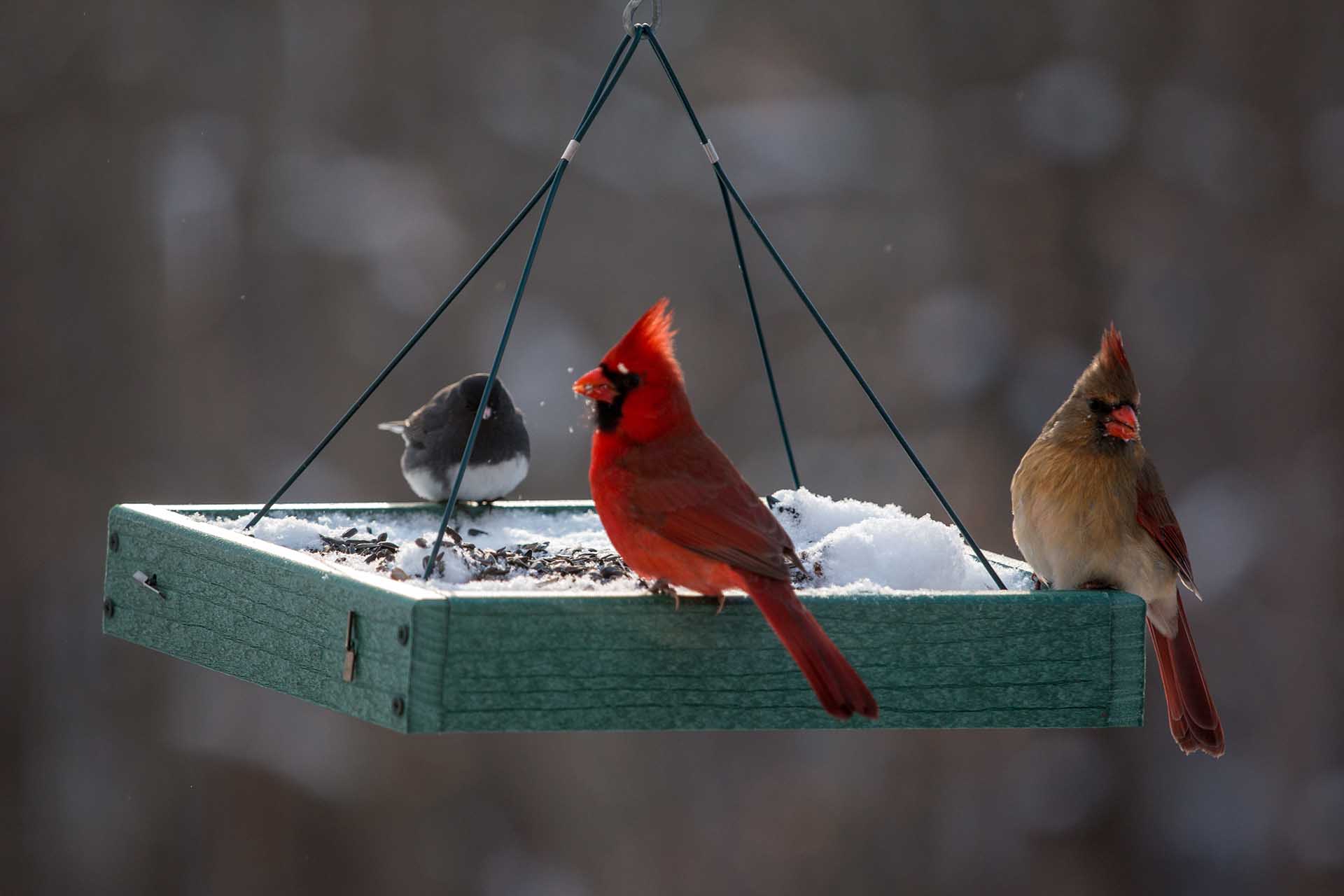
What's in this post
Do you feed the birds in winter? Then you need to know how to clean winter bird feeders.
Winter months might not seem like the best time for backyard birding; however, savvy birders know that colder months can bring an abundance of feathered activity into your yard.
Providing food is perhaps the easiest way to attract winter birds, and it can also help them survive the winter season. Well-fed birds can withstand the harsh rigors of winter by staying warmer than those unable to find reliable sources of food.
Why You Need to Clean Winter Bird Feeders
Dirty bird feeders, especially during warmer winter days when the snow melts, are a breeding ground for diseases that could decimate entire backyard bird populations.
Rancid seed can also attract unwanted backyard wildlife such as mice, rats, raccoons, and opossums. Also, the spoiled seed will cause wood decay and difficulty in cleaning the feeder. Caked seeds can clog feeding parts, hinges, and other parts, causing them to crack, warp, or break.
So clean those feeders!
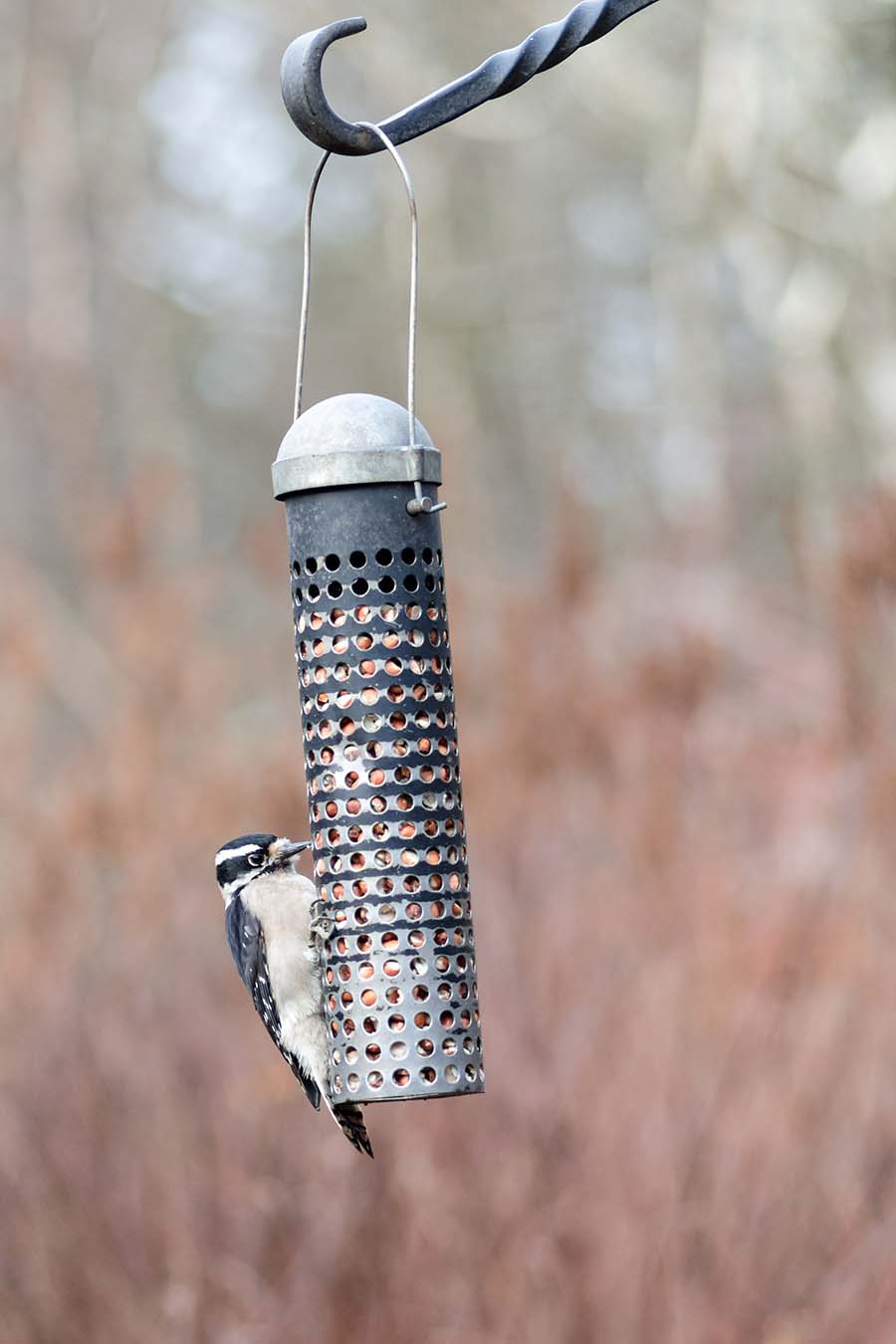
Woodpecker on feeder / Source
How Often Do I Need to Clean My Winter Bird Feeders?
How often you need to clean your bird feeder is dependent upon the style and frequency of its use.
Plastic, metal, and wooden feeders should be cleaned a minimum of once per month, more if the stations are busy.
Because mold can readily grow in sugar water, nectar feeders, like those for hummingbirds, will need a cleaning every time you fill them. If you see any sign of cloudy water or black mold, discard the solution and clean the feeder immediately.
Things You’ll Need
- Fragrance-Free Liquid Soap
- 4 cups White Vinegar
- Water
- Scrub brush or bottle brush depending on the style of feeder
- Large plastic cup (to use in place of a garden hose during rinsing)
- 1 – 2 inch putty knife
- Container for waste
Cleaning Your Winter Bird Feeder: Step-by-Step Directions
Prep the Area
Colder weather means you won’t be cleaning your bird feeders outdoors — instead, clean bird feeders in a garage or other utility area that has access to water. If you don’t have access to this type of space, you’ll need to wait for a mild winter day so that you can clean your feeders outdoors.
Find a bucket or tub large enough to soak the bird feeders thoroughly. Lay a few towels on the ground nearby, sufficient to spread out all of the feeders.
Gather remaining supplies.
Remove Old Seed
Removing old or wet seeds from feeders is essential, particularly in thistle and tube feeders where the grain is easily compacted. Give the feeders a shake over the waste container to help dislodge the seeds.
For platform feeders and seed trays, use the putty knife to remove clumps of old seed caught in corners.
Clean
Fill the bucket or tub with warm water and a small amount of fragrance-free liquid soap or detergent. Scrub the parts of the feeder you can reach with a scrub brush, working from top to bottom. Using the large plastic cup, rinse the feeder thoroughly with clean water. Once complete, set the feeders on the towels nearby.
Empty the bucket or tubs of water and refill with clean water. Add 4 cups of white vinegar. (The idea is to have 50/50 water to vinegar) Let the feeders soak for one hour, then rinse in fresh water.
Set the feeders back onto the towels and allow feeders to dry completely. Once the bird feeders are completely dry, they’ll be ready for use again.
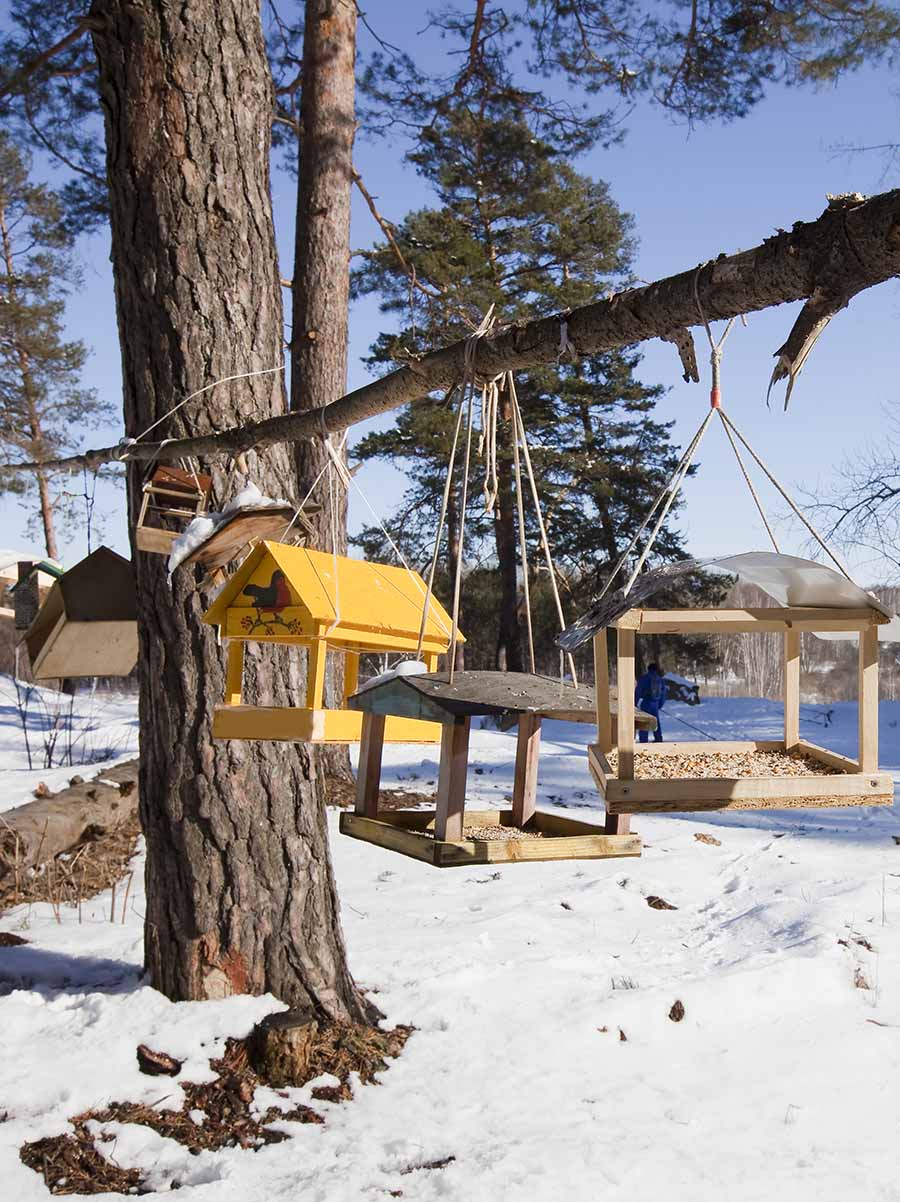
A variety of feeders hanging from tree branches / Source
More Helpful Tips
- If you are enthusiastic about feeding birds but don’t enjoy the burdensome task of cleaning the winter bird feeders, install several feeders and clean them on a rotating schedule. Doing so will eliminate the need for cleaning the feeders all at once. Plus, more feeders equals less crowding and less sharing of disease.
- Wear gloves and always wash your hands thoroughly after filling or cleaning your feeders.
- Keep it dry! Don’t allow substantial amounts of seed to become wet, especially on platform feeders. Instead, when it is wet outside, feed birds from covered stations that keep the seed dry if this isn’t possible, only put out a small handful of grain at one time on the platform.
- Inspect your feeding stations regularly! If you suspect that a sick bird has visited your feeders, take them down and clean them immediately. Don’t put them back up for at least a week to allow the birds a chance to disperse. Call wildlife officials if you notice that the birds in your vicinity seem sick.
- Don’t forget to look down. Cleaning the areas under bird feeders is just as important as cleaning the feeders themselves. Remove old seed hulls and other detritus from under feeding stations and discard.
And finally, if you decide to provide food in the winter, pretty please keep the feeder full since many birds will come to rely on it as a regular place to visit and eat.
Read More on Your Daily Vegan
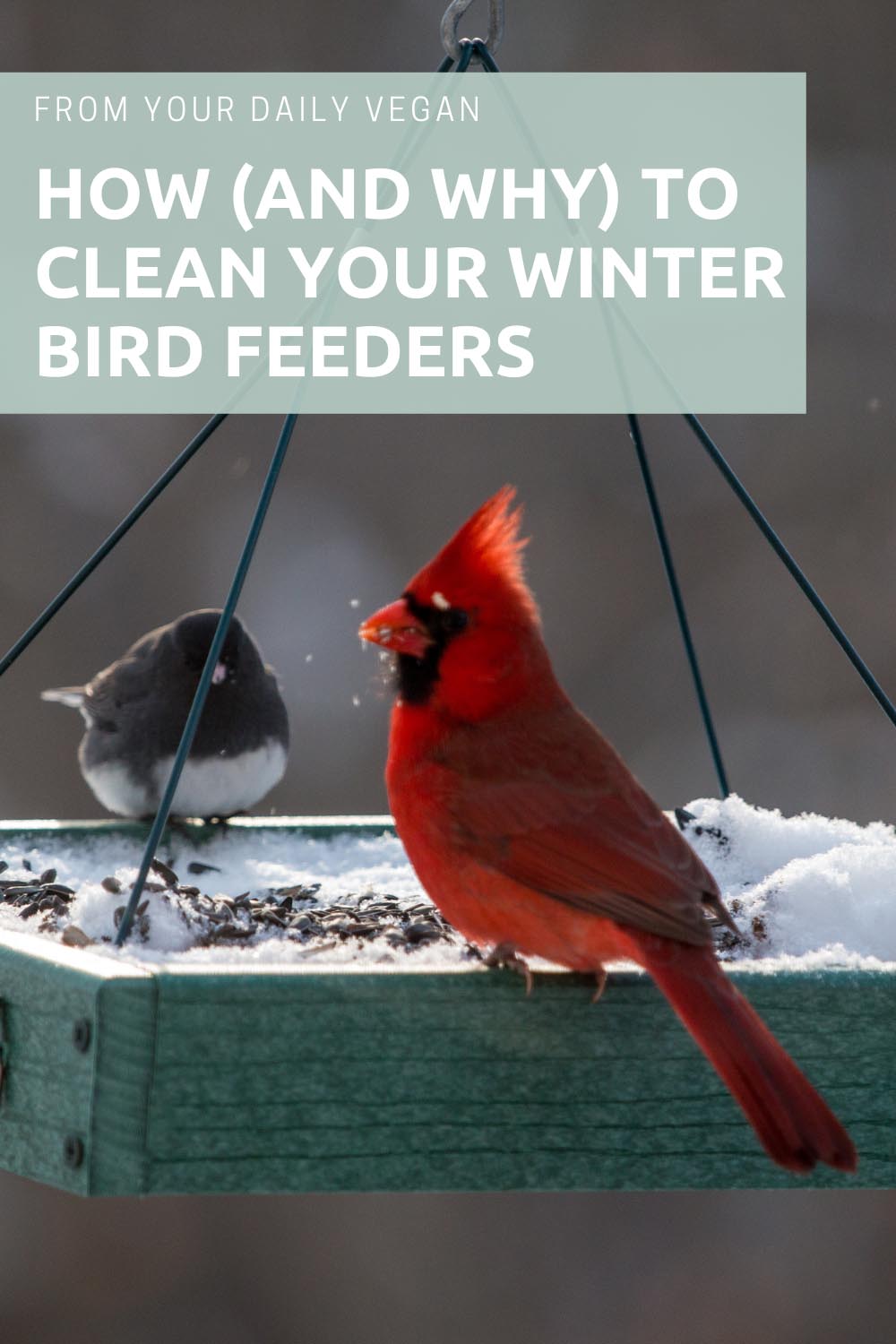
Truth in Advertising
I am committed to providing accurate information to the vegan community. Meticulously researched, the topic explored in this article contains the information available at the time of publishing.
I don’t just say it; I source it too.
Please contact me if you find incorrect data.

